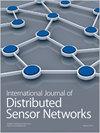基于机器视觉的机器人移动测试动作识别方法
IF 2.5
4区 计算机科学
Q3 COMPUTER SCIENCE, INFORMATION SYSTEMS
International Journal of Distributed Sensor Networks
Pub Date : 2022-08-01
DOI:10.1177/15501329221115375
引用次数: 4
摘要
各种移动应用程序的爆炸式增长和快速版本迭代给移动应用程序测试带来了巨大的工作量。机器人测试方法可以有效地处理重复性测试任务,弥补人工测试的准确性,提高测试工作的效率。基于视觉的机器人测试通过分析专家测试视频来识别测试动作的类型,并生成专家模拟测试用例。移动应用专家模仿测试方法利用机器学习算法分析专家模仿测试视频的行为,生成高可靠性和可重用性的测试用例,驱动机器人执行测试用例。然而,在二维图像中估计多维手势的难度导致了复杂的算法步骤,包括动态手势的跟踪、检测和识别。因此,本文主要研究移动应用机器人测试中测试动作的分析与识别。结合改进的YOLOv5算法和ResNet-152算法,提出了一种基于机器视觉的移动应用测试动作可视化建模方法。YOLOv5算法通过注入动态锚点、注意机制和加权盒融合实现手部的精确定位。改进后的算法识别准确率由82.6%提高到94.8%。通过在ResNet-152算法中引入金字塔上下文感知机制,提高了测试动作分类的准确率。测试动作分类准确率由72.57%提高到76.84%。实验表明,该方法可以降低测试动作的多次检测和漏检概率,提高测试动作识别的准确率。本文章由计算机程序翻译,如有差异,请以英文原文为准。
Machine vision-based testing action recognition method for robotic testing of mobile application
The explosive growth and rapid version iteration of various mobile applications have brought enormous workloads to mobile application testing. Robotic testing methods can efficiently handle repetitive testing tasks, which can compensate for the accuracy of manual testing and improve the efficiency of testing work. Vision-based robotic testing identifies the types of test actions by analyzing expert test videos and generates expert imitation test cases. The mobile application expert imitation testing method uses machine learning algorithms to analyze the behavior of experts imitating test videos, generates test cases with high reliability and reusability, and drives robots to execute test cases. However, the difficulty of estimating multi-dimensional gestures in 2D images leads to complex algorithm steps, including tracking, detection, and recognition of dynamic gestures. Hence, this article focuses on the analysis and recognition of test actions in mobile application robot testing. Combined with the improved YOLOv5 algorithm and the ResNet-152 algorithm, a visual modeling method of mobile application test action based on machine vision is proposed. The precise localization of the hand is accomplished by injecting dynamic anchors, attention mechanism, and the weighted boxes fusion in the YOLOv5 algorithm. The improved algorithm recognition accuracy increased from 82.6% to 94.8%. By introducing the pyramid context awareness mechanism into the ResNet-152 algorithm, the accuracy of test action classification is improved. The accuracy of the test action classification was improved from 72.57% to 76.84%. Experiments show that this method can reduce the probability of multiple detections and missed detection of test actions, and improve the accuracy of test action recognition.
求助全文
通过发布文献求助,成功后即可免费获取论文全文。
去求助
来源期刊
CiteScore
6.50
自引率
4.30%
发文量
94
审稿时长
3.6 months
期刊介绍:
International Journal of Distributed Sensor Networks (IJDSN) is a JCR ranked, peer-reviewed, open access journal that focuses on applied research and applications of sensor networks. The goal of this journal is to provide a forum for the publication of important research contributions in developing high performance computing solutions to problems arising from the complexities of these sensor network systems. Articles highlight advances in uses of sensor network systems for solving computational tasks in manufacturing, engineering and environmental systems.

 求助内容:
求助内容: 应助结果提醒方式:
应助结果提醒方式:


